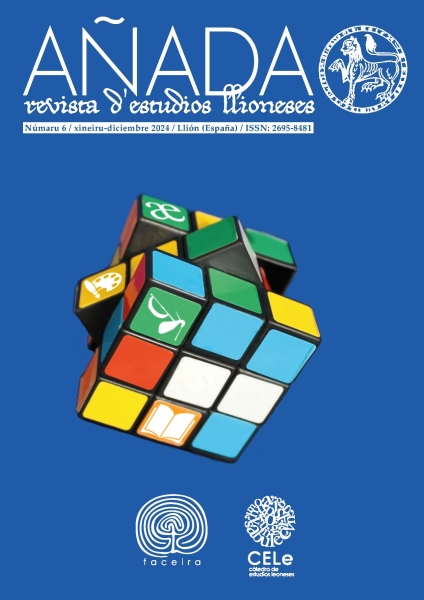
The present paper studies syncopated vs. non-syncopated 1st and 2nd person plural forms of the Ibero-Romance future subjunctive in Medieval Leonese legal documents from 1239 to 1414, like vinierdes vs. vinieredes, or mandarmos vs. mandaremos. The corpus contains all documents from the former archive of the monastery of San Pedro de Eslonza issued during the specified period (now at the Archivo Histórico Nacional in Madrid). We find that
(i) a precise and paleographically informed study of the original documents is necessary to obtain correct and unambiguous results, and that (ii) the regression of 1st person plural forms with syncope is most likely a result of a Castilianization process. Based on the data, we establish the working hypothesis that (iii) in Leonese scriptae in and around San Pedro de Eslonza, the Ibero-Romance -a-conjugation makes use of syncopated forms for a more extended period of time, while the -e-conjugation begins to switch earlier to non-syncopated forms, just as the -i-conjugation. The latter, additionally,
often shows abbreviated forms that need to be analyzed precisely before drawing conclusions on the possible presence or absence of syncope.
Añada: revista d’estudios llioneses ye una publicación científica d’arte y humanidades evaluada por pares (peer reviewed journal) y de periodicidá añal, qu’edita l’Asociación Cultural Faceira en colaboración cona “Cátedra de Estudios Leoneses” de la Universidá de Llión dende’l 2019.
La revista publica investigaciones, revisiones críticas y recensiones bibliográficas sobre cualquier aspectu históricu, xeográficu, lingüísticu ou cultural relacionáu cona rexón de Llión.
La llengua de la revista ye’l asturllionés. Sicasí, accéptanse tamién artículos nas outras llenguas de Llión: castellanu y gallegoportugués. Amás, y siempre que tengan el preste del Conseyu de Redacción, podrán acceptase textos n’outros idiomas cumo’l francés, l’italianu, l’inglés ou l’alemán.